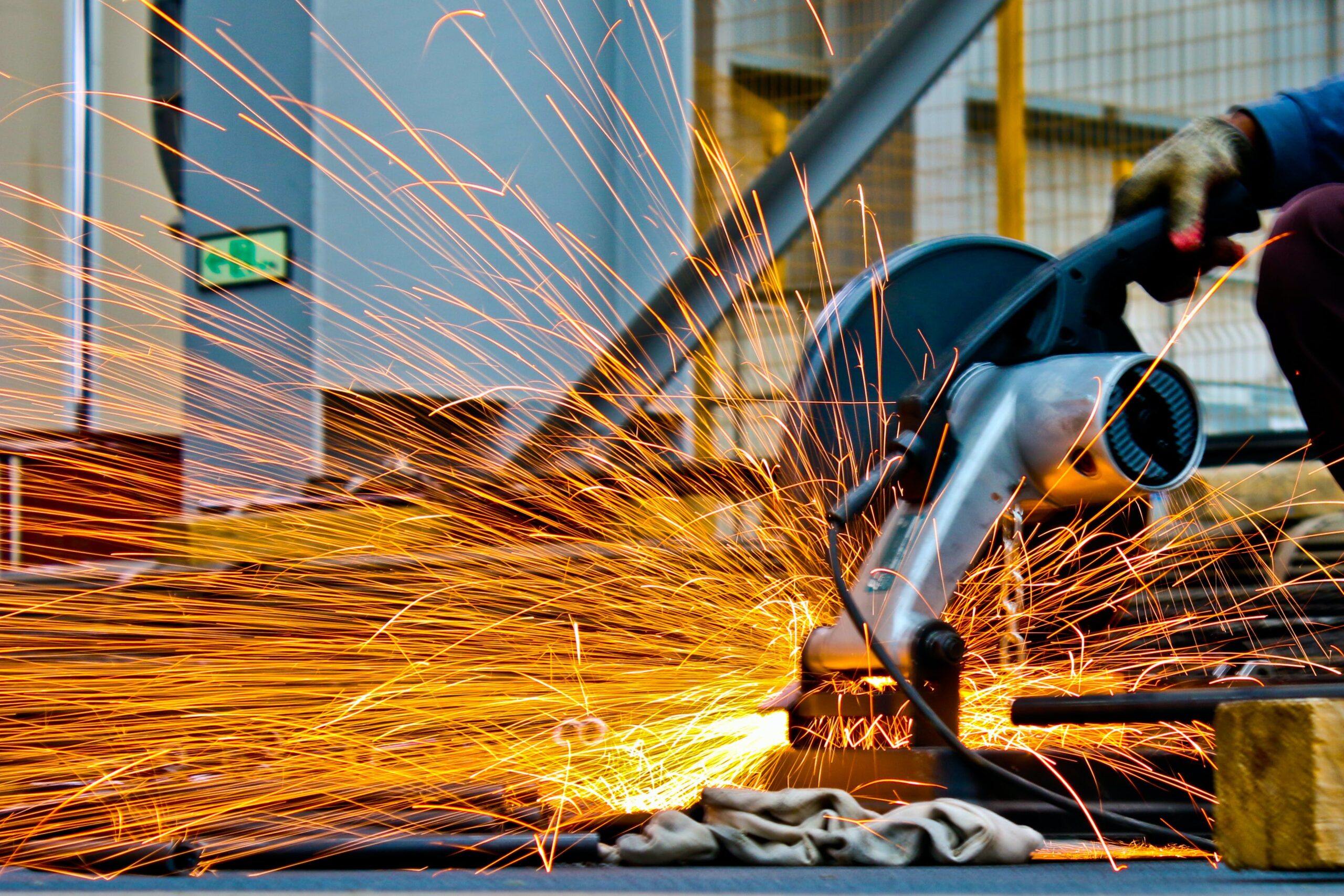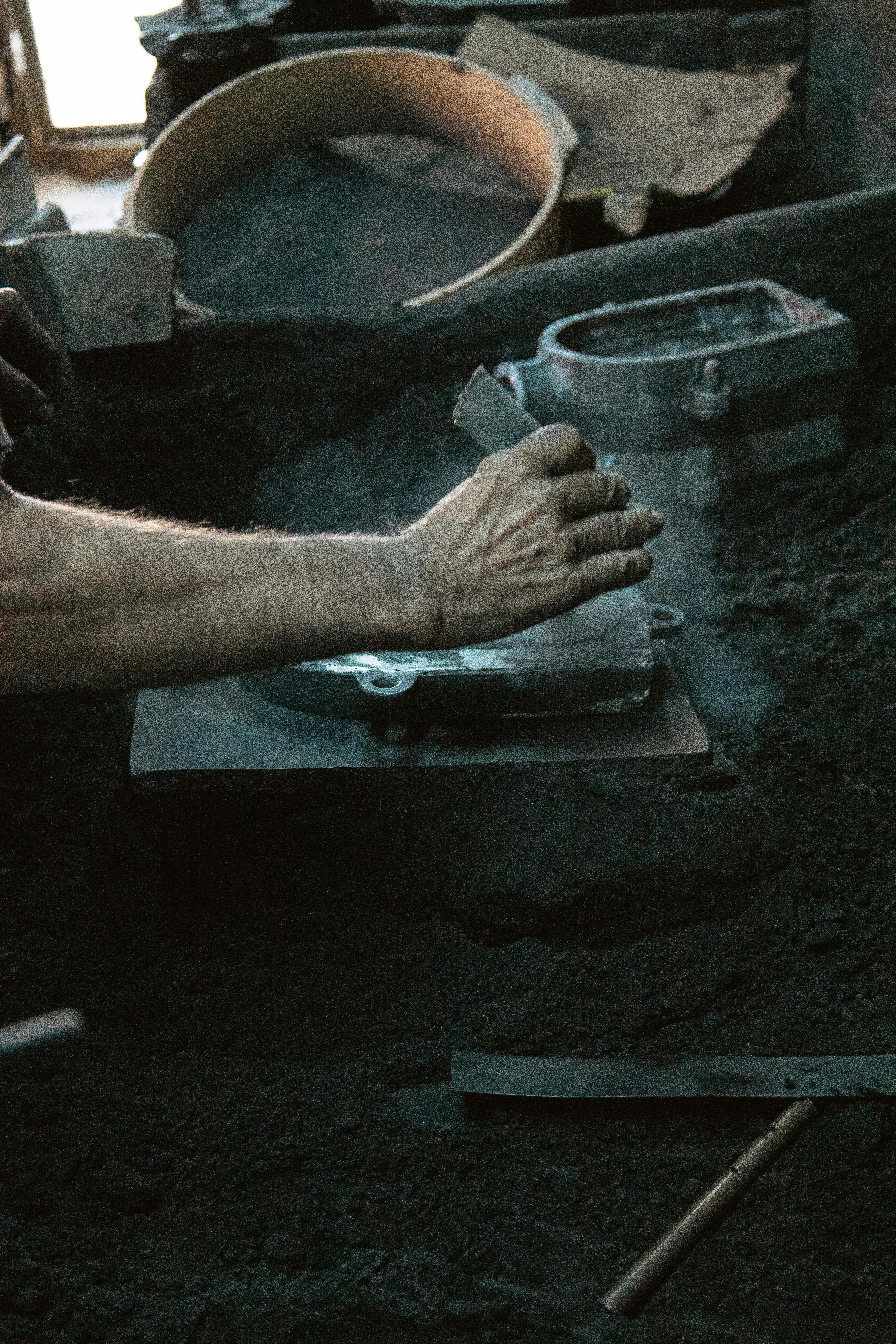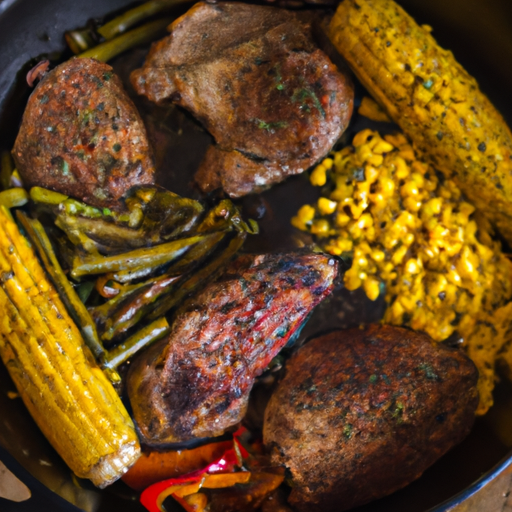If you’re looking to elevate your cooking game, look no further than the versatility of cast iron skillets. These kitchen essentials have become a favorite among professional chefs and home cooks alike for good reason. Their ability to evenly distribute heat and retain it makes them perfect for searing, sautéing, baking, and even frying. From perfectly crisped bacon to mouthwatering cornbread, cast iron skillets are the go-to tool for achieving delicious results. In this article, we’ll explore the endless possibilities that come with owning one of these culinary workhorses. So get ready to take your cooking to new heights with the incredible versatility of cast iron skillets.

Benefits of Cast Iron Skillets
Durable and long-lasting
Cast iron skillets are known for their durability and long-lasting performance. Made from a single piece of metal, these skillets are able to withstand high heat and are not easily damaged. With proper care, a cast iron skillet can last for generations, making it a worthwhile investment for any kitchen.
Even heat distribution
One of the key benefits of cooking with a cast iron skillet is its ability to distribute heat evenly. This ensures that your food cooks consistently, without any hot spots. Whether you’re searing a steak or baking a casserole, a cast iron skillet provides uniform heat distribution for excellent cooking results.
Retains heat well
Cast iron has the unique ability to retain heat for extended periods of time. This means that once your skillet is preheated, it will stay hot even when you add ingredients. This is particularly useful when searing meat or frying foods, as it helps to achieve a crispy exterior while maintaining a juicy interior.
Naturally non-stick surface
Contrary to popular belief, cast iron skillets can have a naturally non-stick surface when properly seasoned. Seasoning involves coating the skillet with a layer of oil or fat and heating it to create a polymerized layer that acts as a barrier between the food and the skillet. This makes cooking and cleaning a breeze, as food easily releases from the surface without sticking.
Versatile for stove and oven use
Another advantage of cast iron skillets is their versatility. These skillets can be used on any stovetop, including gas, electric, and induction. They are also oven-safe, making them suitable for a wide range of cooking techniques, from stovetop searing to oven roasting. This versatility makes cast iron skillets a valuable addition to any kitchen.
Cooking Techniques with Cast Iron Skillets
Searing and browning
Cast iron skillets are perfect for achieving a nice sear on your meats. The even heat distribution and excellent heat retention properties of cast iron make it ideal for creating a delicious crust on steaks, chicken, and other proteins. The high heat also helps to caramelize sugars, resulting in a rich, deep brown color and enhanced flavor.
Sauteing and stir-frying
The large cooking surface of a cast iron skillet makes it great for sauteing and stir-frying. The even heat distribution ensures that your vegetables cook evenly, while the high sides of the skillet help to prevent ingredients from spilling over. The versatility of a cast iron skillet also allows you to effortlessly transfer from stovetop sauteing to oven finishing.
Roasting and baking
Cast iron skillets are not limited to stovetop cooking – they can also be used for roasting and baking in the oven. Whether you’re roasting a chicken or baking a batch of cookies, a cast iron skillet provides even heat distribution and excellent heat retention to achieve perfect results. The skillet’s ability to go from stovetop to oven makes it a convenient tool for a variety of dishes.
Deep frying
The high sides and heat retention properties of a cast iron skillet make it an excellent choice for deep frying. The oil stays hot and maintains a consistent temperature, resulting in crispy, golden fried foods. The even heat distribution ensures that all sides of the food are cooked evenly, while the durable construction of the skillet can withstand the high temperatures required for deep frying.
Grilling
If you don’t have an outdoor grill, a cast iron skillet can be a great alternative for grilling indoors. The skillet can be preheated to high temperatures, allowing you to achieve that delicious char and flavor on your meats and vegetables. The ridges on the bottom of the skillet create sear marks, giving your grilled dishes that authentic BBQ look.

Recipes Made Easy with Cast Iron Skillets
Classic fried chicken
A cast iron skillet is the perfect tool for making classic fried chicken. The high sides and even heat distribution ensure that the chicken cooks evenly and retains its crispy exterior. The skillet’s ability to hold heat also helps to keep the chicken warm while you finish frying the remaining pieces. Serve with mashed potatoes and coleslaw for a delicious homemade meal.
Fluffy cornbread
Cornbread is a Southern staple and is best made in a cast iron skillet. The skillet’s ability to retain heat results in a perfectly cooked cornbread with a crispy crust and a fluffy interior. Served warm with butter and honey, cast iron skillet cornbread is a delicious side dish that complements any meal.
Skillet pizza
Making pizza at home is easy with a cast iron skillet. Simply roll out your pizza dough and transfer it to the skillet, then top with your favorite ingredients. The skillet’s heat retention properties ensure that the crust cooks evenly and achieves a nice crispiness. In just a few minutes, you’ll have a hot, cheesy, homemade pizza ready to enjoy.
One-pot meals
A cast iron skillet is the ideal tool for making one-pot meals. Whether it’s a hearty chili, a flavorful jambalaya, or a creamy pasta dish, the skillet’s even heat distribution and excellent heat retention allow for even and consistent cooking. The skillet’s versatility also allows you to start your dish on the stovetop and finish it in the oven, making it a convenient option for a variety of recipes.
Dutch baby pancakes
Dutch baby pancakes, also known as German pancakes, are a delicious and impressive breakfast option. The batter is poured into a preheated cast iron skillet and baked in the oven. The skillet’s heat retention properties help to achieve a golden brown exterior, while the high sides of the skillet create a dramatic puffed pancake that is sure to impress.
Maintenance Tips for Cast Iron Skillets
Seasoning your skillet
To maintain the natural non-stick surface of your cast iron skillet, it’s important to season it regularly. Seasoning involves coating the skillet with a layer of oil or fat and heating it to create a polymerized layer. This layer helps to prevent food from sticking and protects the skillet from rust. To season your skillet, simply rub it with a thin layer of oil or fat and bake it in the oven for an hour at a low temperature.
Cleaning and drying properly
Contrary to common belief, cleaning a cast iron skillet is not difficult. Avoid using soap and abrasive scrubbers, as they can remove the seasoning. Instead, use a soft sponge or brush and hot water to remove any food residue. If there are stubborn bits stuck to the skillet, you can use coarse salt as a gentle abrasive. After cleaning, make sure to thoroughly dry the skillet to prevent rusting.
Avoiding acidic foods
Cast iron skillets are not suitable for cooking acidic foods, such as tomatoes, citrus fruits, and vinegar-based sauces. The acid can react with the iron and cause a metallic taste in the food. If you need to cook acidic foods, it’s best to use a stainless steel or enamel-coated skillet instead.
Storing your skillet
When storing your cast iron skillet, it’s important to ensure that it is completely dry to prevent rusting. You can place a paper towel or cloth inside the skillet to absorb any moisture. It’s also a good idea to lightly oil the surface of the skillet before storing to maintain its seasoning. Store the skillet in a cool, dry place with the lid slightly ajar to allow for airflow.
Restoring and re-seasoning
If your cast iron skillet starts to lose its seasoning or develops rust, don’t worry – it can be restored. To remove rust, scrub the affected area with steel wool or a stiff brush until the rust is gone. Once the skillet is clean, you can re-season it by following the seasoning process mentioned earlier. With proper care and maintenance, your cast iron skillet can be brought back to its original condition.

Common Myths About Cast Iron Skillets
They are difficult to clean
Cast iron skillets are often thought to be difficult to clean, but this is not true. With the proper cleaning techniques, cleaning a cast iron skillet can be quick and easy. Avoid using soap and abrasive scrubbers, and simply use hot water and a soft sponge or brush to remove any food residue. With regular seasoning and proper care, your cast iron skillet will remain in great condition.
Food sticks to the surface
Another common myth is that food sticks to the surface of a cast iron skillet. While it is true that cast iron skillets can initially be sticky before they are properly seasoned, a well-seasoned skillet will have a naturally non-stick surface. The seasoning forms a protective layer that prevents food from sticking, allowing for easy release and effortless cleaning.
They are too heavy to handle
Cast iron skillets are known for their weight, but this should not deter you from using them. The weight of the skillet actually contributes to its heat retention properties and durability. While it may take some getting used to, the benefits of cooking with a cast iron skillet outweigh the slight inconvenience of its weight. Plus, with time, you’ll become accustomed to handling it with ease.
They cannot be used on glass or ceramic stovetops
Another myth about cast iron skillets is that they cannot be used on glass or ceramic stovetops. While it’s true that cast iron skillets can scratch these surfaces if not handled properly, they can be safely used on glass or ceramic stovetops with some caution. Avoid sliding the skillet on the surface and lift it when moving it around. With proper care, a cast iron skillet can be used on any stovetop.
They are not suitable for cooking acidic foods
While it’s true that cooking acidic foods in a cast iron skillet can cause a metallic taste, this does not mean that all acidic foods are off-limits. Mildly acidic foods, like a tomato-based sauce, can be cooked in a well-seasoned cast iron skillet without any issues. However, highly acidic foods, like citrus fruits and vinegar-based sauces, should be avoided to prevent a metallic taste.
Choosing and Buying a Cast Iron Skillet
Size and weight
When choosing a cast iron skillet, consider the size and weight that would work best for your cooking needs. Skillets come in various sizes, ranging from small to extra-large. Think about the types of dishes you’ll be preparing and the number of servings you’ll be making. Additionally, consider the weight of the skillet and your comfort level in handling it.
Pre-seasoned or unseasoned
Cast iron skillets can come pre-seasoned or unseasoned. Pre-seasoned skillets have already been coated with a layer of oil or fat and are ready to use right out of the box. Unseasoned skillets, on the other hand, require seasoning before they can be used. Consider your experience level and the amount of time you’re willing to invest in seasoning when deciding between pre-seasoned and unseasoned options.
Handle design
The handle design of a cast iron skillet can greatly affect your cooking experience. Some skillets have long handles, while others have twin handles for easy lifting. Consider your comfort and preference when choosing a handle design. Additionally, look for skillets that have a helper handle, which can make it easier to maneuver the skillet, especially when it’s full of food.
Brands and pricing
There are many brands of cast iron skillets available, ranging from well-known names to smaller, artisanal producers. Consider the reputation and reviews of different brands to ensure you’re getting a quality product. Additionally, compare prices to find a skillet that fits within your budget. Keep in mind that while quality may come with a higher price, a well-cared-for cast iron skillet can last a lifetime.
Quality and durability
When buying a cast iron skillet, it’s important to consider the quality and durability of the product. Look for skillets that are made from high-quality materials and have a smooth cooking surface. Check the construction of the skillet, ensuring that there are no cracks or imperfections. A well-made cast iron skillet will provide excellent heat retention and last for years to come.
Alternative Uses for Cast Iron Skillets
Baking bread
Cast iron skillets can be used for baking bread, providing a nice crust and even heat distribution. Simply preheat the skillet in the oven, transfer the bread dough to the skillet, and bake as usual. The skillet’s ability to retain heat helps to achieve a crisp and golden crust, while the even heat distribution ensures that your bread bakes evenly.
Grilling and smoking
If you’re looking to achieve a smoky flavor in your dishes, a cast iron skillet can be used for grilling or smoking. Simply preheat the skillet on the stovetop, then add wood chips or charcoal to create a smoky environment. Place your food on a rack inside the skillet and cover with a lid to trap the smoke. This technique is especially useful for indoor cooking or when you don’t have access to an outdoor grill.
Serving and presentation
Cast iron skillets can also be used for serving and presentation purposes. Whether you’re serving a sizzling fajita platter or a bubbling hot dip, a cast iron skillet adds a rustic and charming touch to your table. The skillet’s ability to retain heat also keeps your food warm for a longer period, allowing your guests to enjoy their meal at their own pace.
Heating and warming
Cast iron skillets can be used for heating and warming purposes, making them a versatile tool in the kitchen. From reheating leftovers to melting cheese for nachos, a cast iron skillet can quickly and evenly heat your food. The skillet’s heat retention properties ensure that your food stays hot, allowing you to serve it at the perfect temperature.
Decoration and display
Lastly, cast iron skillets can be used for decoration and display purposes. The rustic and vintage look of cast iron skillets adds character to any kitchen or dining room. Hang a collection of skillets on a wall for a unique and eye-catching display, or use them as centerpieces filled with seasonal fruits or flowers. The possibilities are endless when it comes to incorporating cast iron skillets into your decor.
Health Benefits of Cooking with Cast Iron Skillets
Iron supplementation
Cooking with a cast iron skillet can provide added iron to your diet. When cooking acidic or liquid-based foods in a cast iron skillet, a small amount of iron is transferred to the food, increasing its iron content. This is especially beneficial for individuals with iron deficiencies or those who are at risk of developing anemia.
Reduced need for added fats
One of the health benefits of cooking with a cast iron skillet is its natural non-stick surface. This allows you to cook with less oil or fat, reducing the overall fat content in your dishes. The seasoned surface of the skillet helps to prevent food from sticking, allowing you to cook with minimal added fats while still achieving great flavor.
Chemical-free cooking
Cast iron skillets are made from a single piece of metal, making them chemical-free and non-toxic. Unlike non-stick pans that can release harmful chemicals when heated, cast iron skillets are a safe and healthy cooking option. You can cook with peace of mind, knowing that no harmful substances are leaching into your food.
Heat retention for better nutrient preservation
Cast iron skillets have excellent heat retention properties, which can help to preserve the nutrients in your food. The even heat distribution and high heat capacity of the skillet ensure that your food cooks evenly and quickly, minimizing nutrient loss. This is especially important when cooking vegetables, as it helps to retain their vibrant colors and crisp textures.
Improved flavor and texture
Another health benefit of cooking with a cast iron skillet is the improved flavor and texture of your food. The even heat distribution and excellent heat retention enhance the Maillard reaction, resulting in a rich, caramelized flavor and a crispy exterior. Additionally, the heat retention properties of the skillet help to keep your food warm for longer, allowing flavors to develop and meld together.
Cooking Tips and Techniques for Cast Iron Skillets
Preheating and temperature control
To achieve the best cooking results with a cast iron skillet, it’s important to preheat it before adding ingredients. Preheating helps to ensure even heat distribution and prevents food from sticking. Additionally, use a medium heat setting on your stovetop to prevent the skillet from getting too hot and burning your food.
Using oils and fats
While a well-seasoned cast iron skillet has a naturally non-stick surface, using a small amount of oil or fat can enhance the flavor and prevent food from sticking. Choose oils with a high smoke point, such as vegetable oil or avocado oil. Gently coat your skillet with oil before adding ingredients, ensuring that the entire cooking surface is covered.
Avoiding overcrowding
To achieve proper browning and ensure even cooking, it’s important to avoid overcrowding the skillet. Overcrowding can lower the temperature of the skillet and prevent the food from properly searing. Cook in batches if necessary, allowing each ingredient enough space to cook evenly and develop a nice crust.
Flipping and flipping
When cooking with a cast iron skillet, it’s important to flip and stir your food as needed to ensure even cooking. Use a spatula or tongs to carefully flip meats, vegetables, or pancakes. For sauteing or stir-frying, use a spatula or wooden spoon to move the ingredients around the skillet, ensuring that all sides are cooked evenly.
Deglazing and scraping
After cooking, take advantage of the flavorful browned bits stuck to the bottom of the skillet. This is called fond and can be used to create delicious pan sauces or gravies. To deglaze the skillet, add a liquid, such as wine or broth, and use a wooden spoon or spatula to scrape up the fond. This adds depth of flavor to your dishes and makes cleanup easier.
Conclusion
In conclusion, cast iron skillets offer a wide range of benefits and possibilities in the kitchen. From their durability and heat distribution to their versatility and health benefits, these skillets are a must-have tool for any home cook. Whether you’re searing a steak, baking a loaf of bread, or creating a one-pot meal, a cast iron skillet is sure to deliver delicious results. With proper care and maintenance, a cast iron skillet can become a cherished kitchen heirloom that will last for generations. So why not invest in the versatility and benefits of cast iron skillets and take your cooking to the next level?

